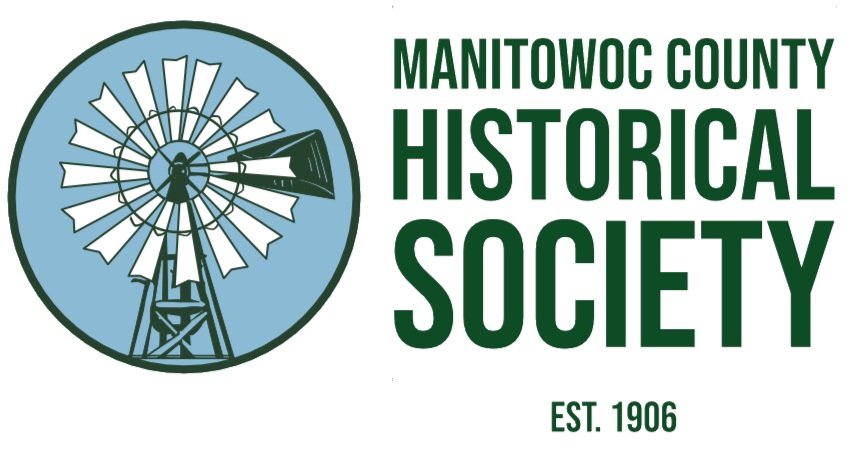The Osman Community
“Many of the hardy and intrepid sons of the Emerald Isle took up their abode in the county and joined their fortunes with that of the community”, wrote Dr. Louis Falge in his 1911 volume of the History of Manitowoc County. “The towns of Maple Grove, Rockland, Cato, Meeme, Liberty, and Franklin are largely indebted to them for their coming so early in their history and developed the land into well cultivated farms.”
Osman basketball team, 1910. Picture taken in Osman at Kelley’s Hall. Pictured are Frank Miller, James Driscoll, Raymond O’Neil, Robert Lutzke, and Eddie Miller.
The township of Meeme includes the Osman area. The origin of the name “Osman” isn’t entirely known. The first schoolhouse in the township of Meeme was built a half a mile south of Osman, at the home of Henry Mulholland, in 1851. A log school was then built in 1853. John Stuart was the first teacher. A second school building was constructed in 1858 before a third brick school building was built in 1920. When the new school building was ready for students, the old school was moved to the Hoban farm. The 1963-1964 school year marked the end of the Osman school building as classes across Manitowoc County consolidated into the school districts we know today. When in operation, the Osman school had many successful graduates including Michael Kirwan, who became a Circuit Judge; John Nagle, County Superintendent of Schools; John Carey, state senator; and many others.
In 1850, a Catholic Church was founded in Osman and in 1851, the first church building was constructed. A three-acre lot was donated by Henry Mulholland. In return for the parish’s appreciation for the generous donation, Mulholland was given a front pew! When the church was ready to be dedicated, there was a dispute on what to name the parish. Irish parishioners wanted the name St. Patrick, while the German constituents rallied for the name St. Joseph. Bishop Henni of Milwaukee settled the dispute and named the parish St. Isidore, the patron saint of farmers. In 1864, a second church building was constructed, which served the community until 1925, when a church, school, and convent were built.
In 1874, the “St. Isidore Catholic Total Abstinence Society of Meeme” was formed. The original membership list included 120 names. Some members took the pledge for 2 years, some 5 years. On June 21, 1874 it was decided that the organization would hold a ball on July 4 and the proceeds would go to form a library. Grossing $306.47, some of the expenses were $32.17 for groceries, $8.00 for the music, $11.75 for refreshments. The Meeme Circulating Library was established with its own constitution and was located in the sacristy of St. Isidore Church – with open hours on the first and third Sundays after the Masses. Each member could take one book per month.
In 1877, the Total Abstinence Society voted to build a hall. A site was donated, located just east of the school, by James Peppard. The hall, measuring 30 by 50 feet, was known as Temperance Hall. The hall was home to many meetings, family gatherings, and an annual St. Patrick Day celebration – when there was a dispensation from the abstinence pledge. The hall was in operation until a larger dance hall was built in Osman.
An early settler, Anton Walterbach, Sr., operated a grocery store, ice cream parlor, a tavern, and a small hall. This became the social center for the community of Osman. Later, the store was converted into a blacksmith shop and wagon shop. The town of Osman even had a baseball team – the Osman Scrubs.

